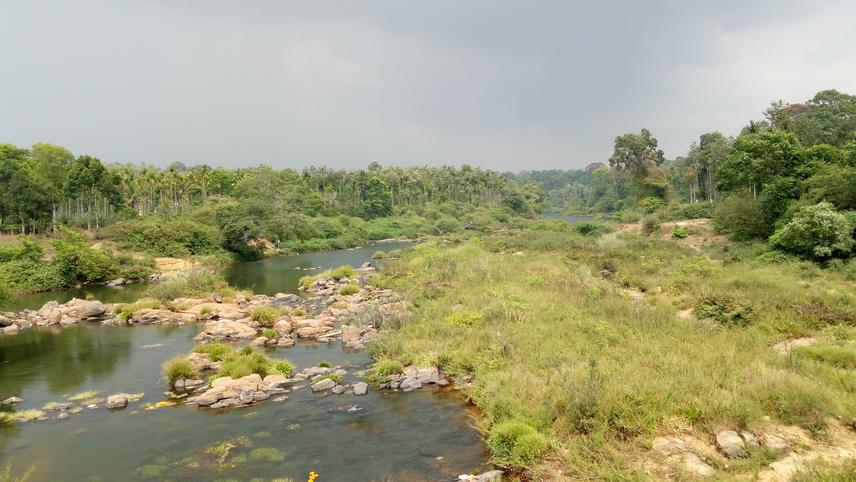Deepthi Narasimhaiah
Ecosystem services are necessary for human well-being. River Cauvery, a major river in south India supports huge populations, provides habitat to threatened fauna (otters, grizzled giant squirrel) and multitude of ecosystem services. Flow of ecosystem services is affected by various land-use practices such as coffee plantations, paddy, sugarcane and other crop cultivation. Lack of awareness and poor policies resulted in deterioration of productive riparian landscape. Therefore, my study aims to generate baseline data on the importance of ecosystem services and the community response towards riparian forest. This will be critical in developing better policies/guidelines to conserve riparian areas and associated biodiversity.

Ecosystem services are the benefits that people obtain from ecosystems and are essential for human well-being. In riverine system, riparian zones are interfaces between terrestrial and aquatic ecosystems and are known to maintain stream bank stability, nutrient removal and other related processes. River Cauvery, a major river in south India supports huge human populations in its basin (basin area: 85,626 km2) for domestic, irrigation, industries and hydro power generation. Its riparian buffers are an important habitat to threatened fauna such as otters and grizzled giant squirrels. Considering the political boundaries, the river flows through two states, Karnataka in upstream and Tamil Nadu in downstream. This work will focus within Karnataka state comprising around 320 km river course. The riparian buffers of river Cauvery in Karnataka state is broadly associated with three different land use systems – coffee - agrosystem, agricultural land and protected area.
Despite being a habitat for biodiversity and providing multitude of ecosystem services, lack of awareness and poor policy/guidelines has led to degradation of riparian buffers in certain parts of the river. In addition to this, land use practices such as coffee plantations, paddy, sugarcane and other crop cultivation has affected the flow of certain ecosystem services. Preliminary field observations show that riparian buffers are experiencing anthropogenic pressures such as sand extraction, encroachment, dumping of waste and plantation of exotic species. This would result in reduced water quality, storage capacity and also have implication on survival of riparian biodiversity.
With this background, my study will generate baseline data on the kind of ecosystem services (mainly provisioning service) and their tangible and intangible values accrued by the community living adjacent to riparian buffers. The study adopts a mixed method approach; focus group discussions, questionnaire survey and informal interviews to interact and generate data from communities. Community interactions will not only bring out the spatio-temporal status of riparian buffers but also whether the communities are willing participate in conservation and restoration of riparian buffers. Over all, the study will highlight the importance of riparian buffers through economic valuation of services. This will inform policy makers to develop guidelines to conserve riparian buffers which is currently lacking in India. Conservation of riparian buffers along river Cauvery could be a model to manage many such riparian ecosystems, their services and biodiversity not only in the Western Ghats but also in other similar landscape settings.